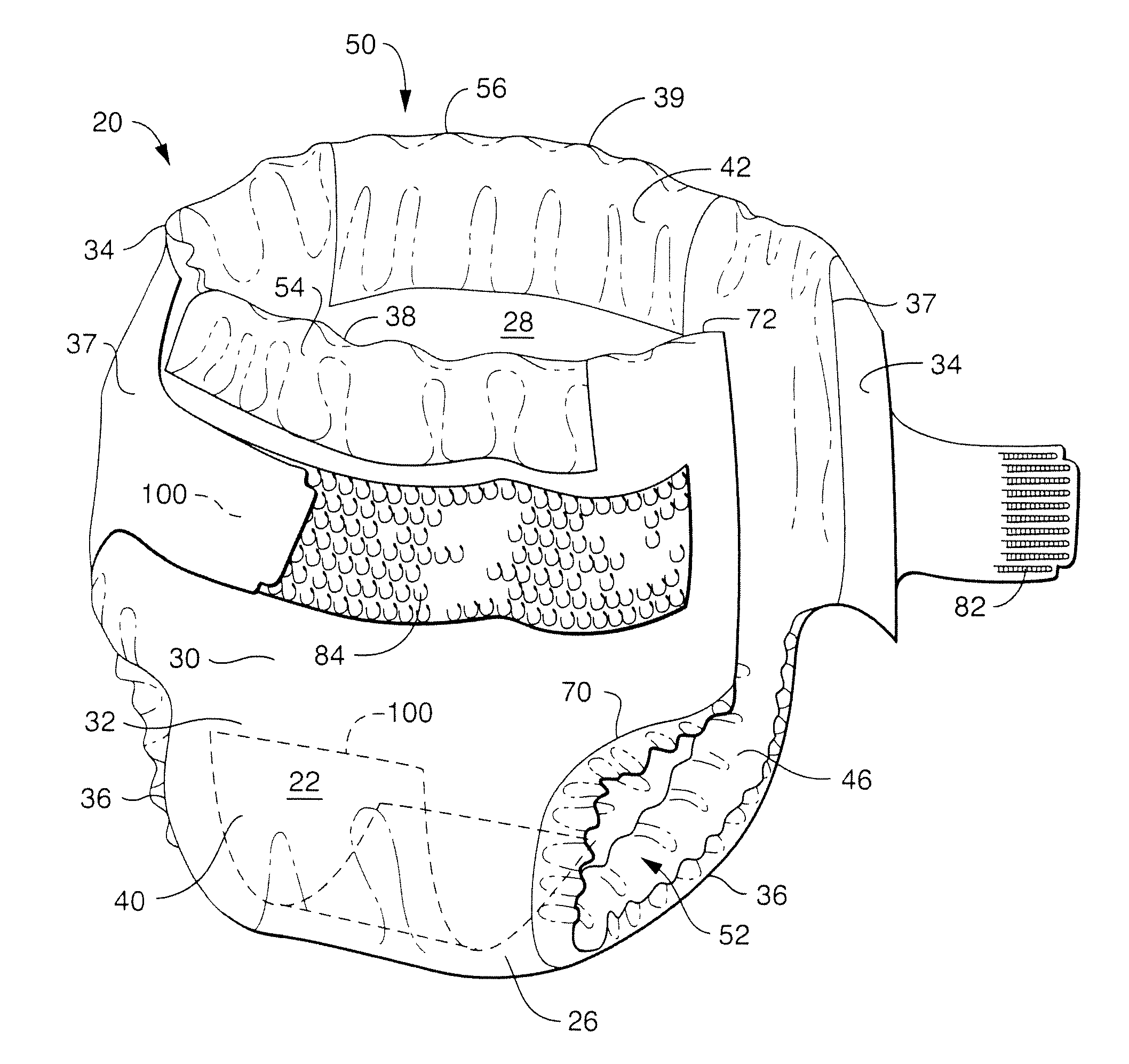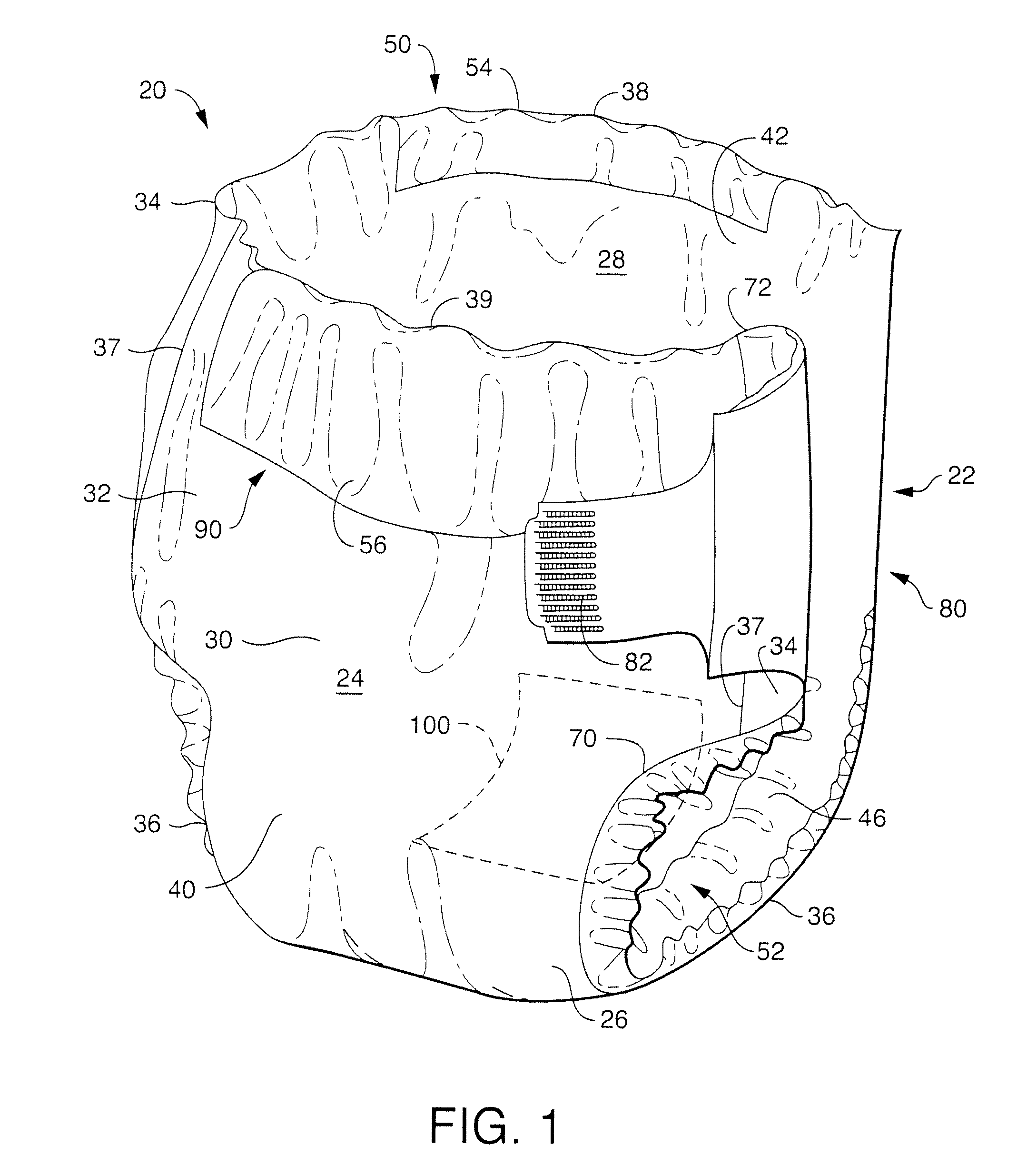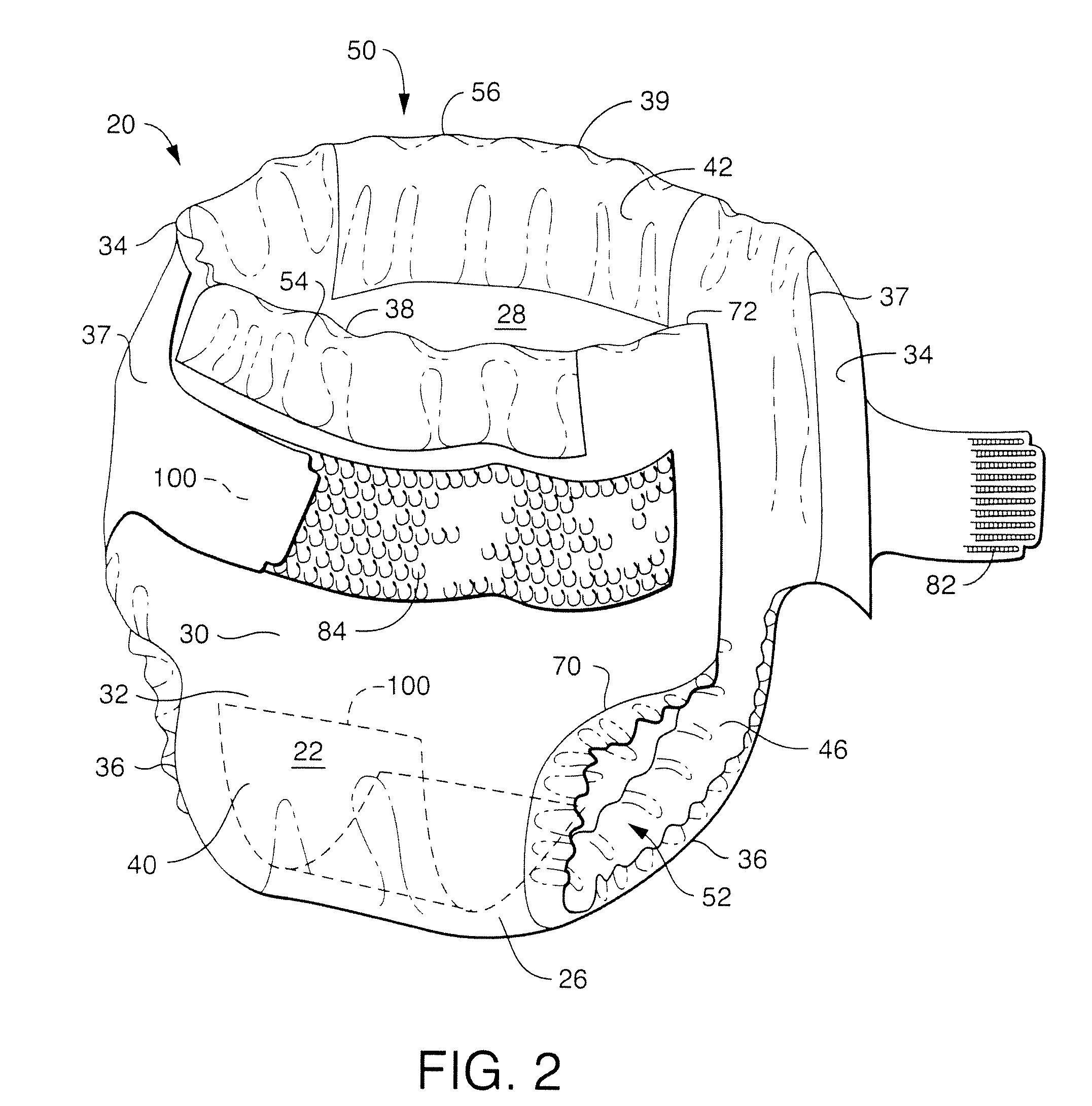Absorbent Article Having An Olfactory Wetness Signal
a technology of absorbent articles and wetness, applied in the field of absorbent articles having wetness signals, can solve the problems of malodorous compositions, which can be configured to emit unpleasant odors, and emit mint-like scents
- Summary
- Abstract
- Description
- Claims
- Application Information
AI Technical Summary
Benefits of technology
Problems solved by technology
Method used
Image
Examples
Embodiment Construction
[0031]It is to be understood by one of ordinary skill in the art that the present discussion is a description of exemplary embodiments only, and is not intended as limiting the broader aspects of the present invention.
[0032]The present disclosure is generally directed to absorbent articles containing an olfactory signaling device that is configured to indicate the presence of a body fluid in the absorbent article or other changes in the condition of the product or wearer. The absorbent article may be, for instance, a diaper, a training pant, an incontinence product, a feminine hygiene product, a medical garment, a bandage, or the like. Absorbent articles made according to the present disclosure contain an odorous composition that does not substantially emit an odor until the absorbent article is contacted with a body fluid, such as urine. For example, in one embodiment, the odorous composition may be contained in a water degradable vehicle that releases the odorous composition when ...
PUM
 Login to View More
Login to View More Abstract
Description
Claims
Application Information
 Login to View More
Login to View More - R&D
- Intellectual Property
- Life Sciences
- Materials
- Tech Scout
- Unparalleled Data Quality
- Higher Quality Content
- 60% Fewer Hallucinations
Browse by: Latest US Patents, China's latest patents, Technical Efficacy Thesaurus, Application Domain, Technology Topic, Popular Technical Reports.
© 2025 PatSnap. All rights reserved.Legal|Privacy policy|Modern Slavery Act Transparency Statement|Sitemap|About US| Contact US: help@patsnap.com



